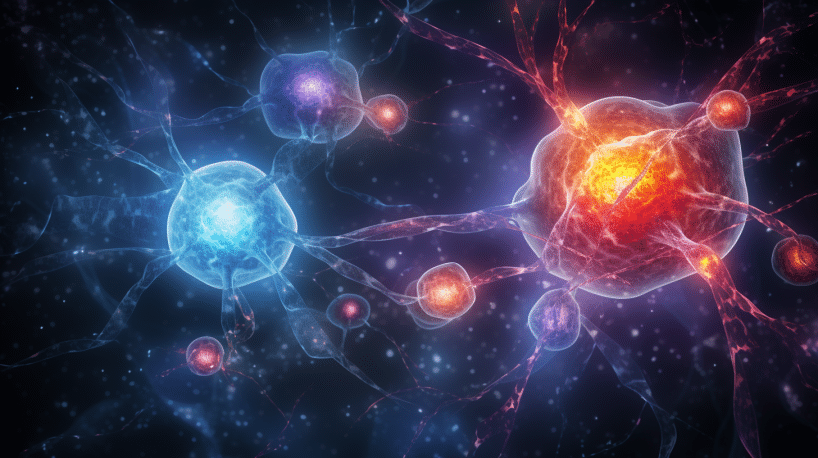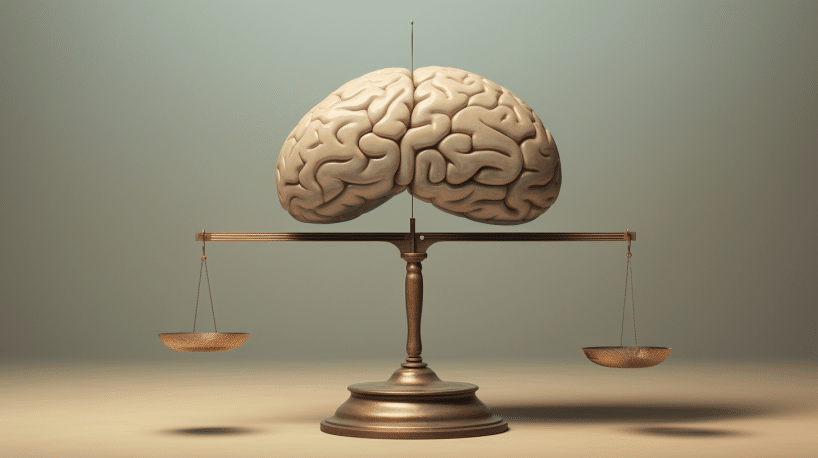Researchers have uncovered novel details about a specific population of brain cells that regulate obesity.
Their findings provide increased understanding of the intricate neural circuits controlling energy balance and point to potential new therapeutic targets for treating obesity.
Key Facts:
- Researchers identified GABAergic neurons in the lateral hypothalamic area (LHA) of the brain expressing the GABAA receptor α5 subunit (GABRA5LHA) that control energy expenditure and fat metabolism.
- These GABRA5LHA neurons show unique electrical firing patterns. Their activity is reduced in obesity, likely due to inhibition by a neurotransmitter called GABA released from surrounding astrocyte cells.
- Silencing the gene Gabra5 in GABRA5LHA neurons reduced weight gain in obese mice without affecting food intake. Similarly, inhibiting production of GABA by astrocytes also decreased obesity.
- A drug that blocks GABA production rapidly reversed obesity in mice by increasing energy expenditure, demonstrating its potential as an anti-obesity medication.
Source: Nature Metabolism. 2023 Aug 31.
The Obesity Epidemic and the Brain’s Role
Obesity has reached epidemic proportions worldwide, driving increased risk for many health conditions like heart disease and diabetes. However, treating obesity remains a major challenge.
While lifestyle factors like diet and exercise are important, the brain also plays a key role in regulating appetite, metabolism, and fat storage.
Understanding the specific neural circuits and cell types that control weight and energy balance could uncover new drug targets for obesity treatment.
Researchers are therefore studying the intricate wiring and signaling between brain regions like the hypothalamus that influence eating behavior and metabolism.
Introducing the Lateral Hypothalamic Area
The lateral hypothalamic area (LHA) is a central hub in the hypothalamus for appetite and metabolism control.
This brain region contains several types of neurons producing neurotransmitters and hormones that regulate food intake and energy expenditure.
For example, one subset of LHA neurons producing melanin-concentrating hormone (MCH) suppresses energy expenditure while another population making orexin promotes energy expenditure.
However, the identity and roles of many LHA cell types remain unknown.
Discovering GABAergic Neurons Expressing GABRA5
In this study, researchers focused on a major population of GABAergic neurons in the LHA that are distinct from MCH and orexin neurons.
Using genetic tools, they specifically labeled LHA GABAergic neurons expressing the GABAA receptor subunit α5 (GABRA5). The α5 subunit renders GABAA receptors sensitive to low, tonic levels of the neurotransmitter GABA.
They found the majority of GABRA5-positive LHA neurons were also GABA producing and showed unique electrical firing patterns, characterized by pacemaker-like spontaneous activity.
GABRA5 Neurons Control Energy Expenditure
What does this unique group of GABRA5/GABAergic LHA neurons do?

To investigate their function, the researchers used chemogenetic and gene silencing techniques to inhibit the GABRA5 neurons in obese mice.
Strikingly, inhibiting activity of GABRA5 neurons increased weight gain without affecting food intake.
Metabolic analysis revealed these neurons specifically promote energy expenditure.
The researchers also found the GABRA5 neurons indirectly connect to fat tissue, providing an anatomical route to stimulate fat burning.
Overall, the results designate GABRA5 LHA neurons as key promoters of energy expenditure through effects on fat, helping restrain obesity.
Obesity Blunts Activity of GABRA5 Neurons
Intriguingly, the researchers discovered these GABRA5 neurons show blunted electrical activity in obese compared to lean mice.
Application of a drug blocking GABA restored their firing, indicating GABA neurotransmission normally keeps their activity in check.
This raised the question – what is the source of this inhibitory GABA?
Astrocytes Produce Excess GABA that Drives Obesity
The culprit turned out to be a population of astrocytes, star-shaped support cells in the brain, that were overactive in the obese state.
Astrocytes usually help nourish neurons but can also release chemicals like GABA that influence neuronal signaling.
The researchers found reactive astrocytes in the LHA in obese mice produced higher GABA levels through increased activity of the GABA-synthesis enzyme MAOB.
Silencing MAOB specifically in LHA astrocytes reduced their GABA production and prevented obesity in mice without affecting appetite.
Similarly, a reversible MAOB inhibitor drug also robustly reversed obesity through activating energy expenditure.
Together, these findings delineate a pathway where elevated astrocyte GABA inhibits the activity of GABRA5 neurons, decreasing fat burning and worsening obesity.
Inhibiting this pathogenic process – either genetically at the source by blocking astrocyte GABA synthesis or pharmacologically with an MAOB inhibitor – holds promise as an anti-obesity strategy.
Treating Obesity by Targeting Brain Chemistry
This research sheds important new light on how the brain’s intricate neurochemistry regulates metabolism and body weight.
The discovery of astrocyte GABA as an obesity driver and GABRA5 neurons as mediators opens promising therapeutic possibilities.
Drugs designed to reduce astrocyte GABA production or block its inhibition of key neuronal circuits could provide effective treatments to boost fat metabolism and weight loss.
Such targeted neurological approaches could help circumvent poor long-term adherence and side effects that limit traditional weight loss medications.
While further research is needed, these findings advance our understanding of the complex cellular players and chemical signaling governing obesity.
Leveraging these insights may ultimately translate into novel anti-obesity pharmacotherapies able to help reverse this devastating epidemic.
References
- Study: Hypothalamic GABRA5-Positive Neurons Control Obesity via Astrocytic GABA
- Authors: Moonsun Sa et al. (2023)







